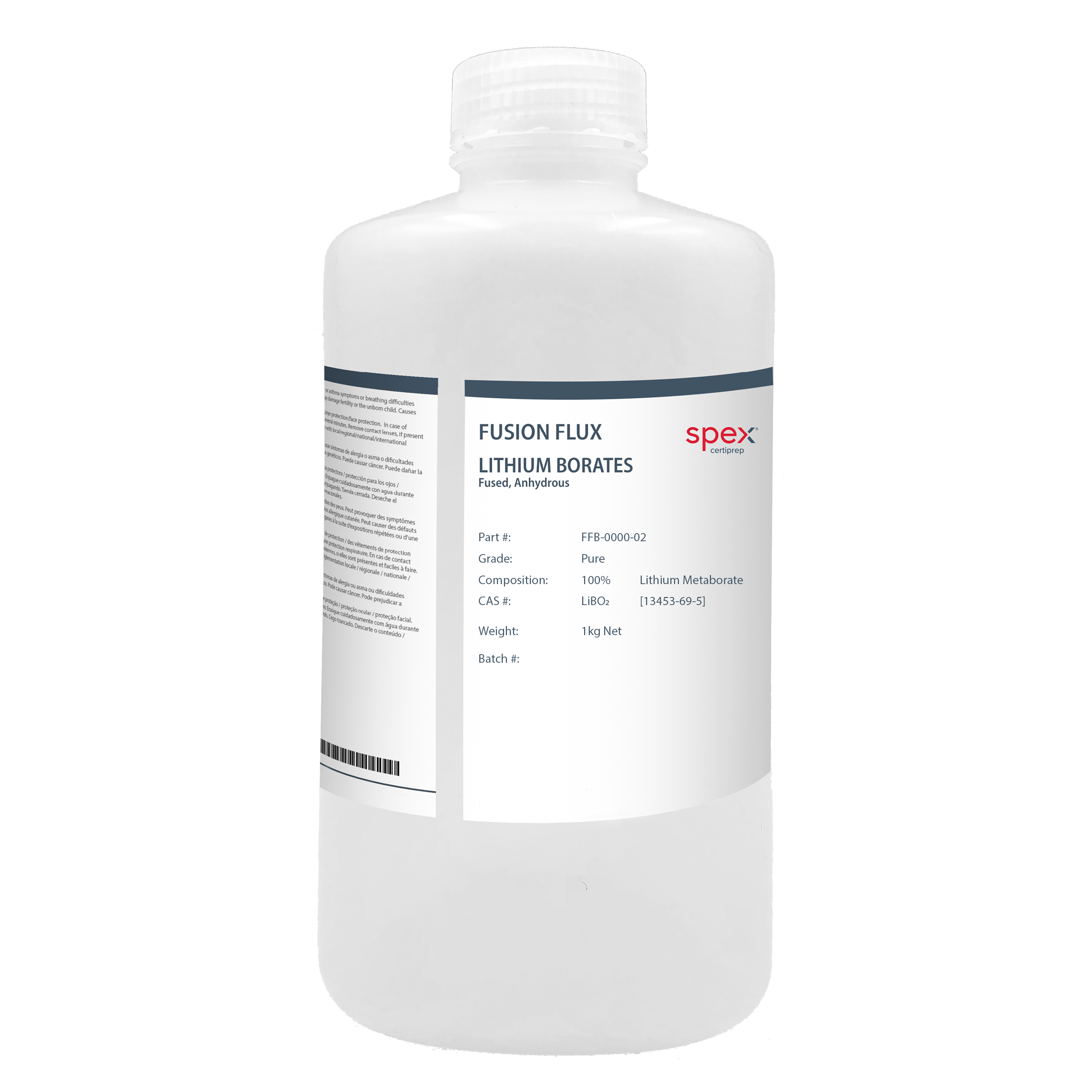
Please wait...

Part # :FFB-0000-02
Study Number :
Volume : 1 kg
Units/Pack :1
Expiration : 365 Days / 12 Months
Storage Condition :Ambient
SDS :Safety Data Sheet
Hazardous Info :
| Product | Shipping |
|---|---|
| Non-Hazardous | Non-Hazardous |
Fusion Fluxes & Additives for XRF, ICP and AA Fusion is a technique used to prepare Inorganic samples, with a view to analyze them by X-Ray Fluorescence (XRF), Inductively Coupled Plasma (ICP), Atomic Absorption (AA), or any traditional wet chemistry method. Typical samples include: cements, ores, slag, sediments, soils, rocks, ceramics, pigments, glasses and even metals. A fusion can produce either a small, homogeneous glass disk (or “bead”) for XRF, or an acid solution for other analytical methods. Fusion is an extremely effective method of preparation for oxides, sulfides, fluorides, ferroalloys, and other compounds for analysis by XRF, AA, ICP, DCP, etc. The samples are, if necessary, pulverized and mixed with a flux; this mixture is heated until the flux melts and the sample dissolves in it, yielding a clear, homogeneous melt. The melt can be cast as a glass disk for XRF or dissolved in dilute acids for analysis in solution form. In many cases, fusion fluxing is simpler and the analytical results more accurate than if the sample was prepared by conventional acid dissolution or pressed powder methods. SPEX CertiPrep has a line of pure and ultra-pure Fusion Fluxes and Additives. Both lines are of a high purity, with the ultra pure line having a purity of 99.998%. These fluxes are made from a “micro bead” formula that ensures the same ratio of components is in each bead with no harmful dust to clog your instruments. Our highly standardized manufacturing process produces identical batches with no appreciable lot-to-lot variations, thus maintaining a high level of consistency and quality. Features of our Fluxes: • Homogeneity - Each flux has the same composition throughout. If a flux is not homogeneous, segregation will affect the XRF intensities. • Purity - With pure fluxes, no element impurity exceeds 10 μg/mL. With ultra pure fusion flux, impurities are practically non-existent. • High Density - Our fluxes have a density of 1.4 as compared to 0.3 for fine fluxes. High density flux is easier to handle, measure and, with certain applications, smaller, less expensive platinum ware can be used. • Not Hydroscopic - All of our fluxes have a water content of < 0.05%. The major disadvantage of absorbed water is a loss of accuracy, in the analytical result. This is due to an error in the sample/flux ratio; additionally, the volatilization of water can sometimes occur suddenly, blowing a fraction of the flux sample out of the crucible. • Granularity - All of our fluxes have a granularity greater than 500 μm which means that they contain no dust. Due to electrostatic forces, dusty flux sticks to the weighing pan, the funnel, and the crucible wall, resulting in a loss of flux and the formation of glass droplets on the wall of the crucible. • Outstanding Fluidity - Granular flux will not stick to surfaces and will leave the crucible wall clean after fusion. SPEX SamplePrep offers two approaches to fusion fluxing: the SPEX SamplePrep Automated Fluxer for rapid, repetitive fusions, and graphite crucibles for smaller scale operation.
| Component | Concentration | Matrix | CAS# |
|---|---|---|---|
| Lithium Metaborate (100%) |

Safety Data Sheet